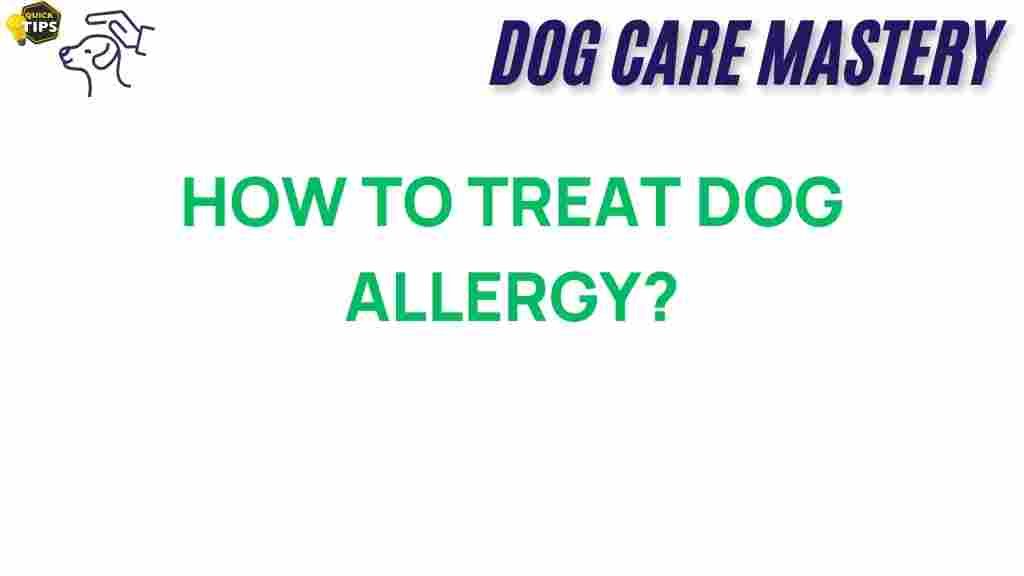Dog Allergy Treatment: Uncovering the Secrets
As a dog owner, nothing is more distressing than seeing your beloved pet suffer from allergies. Just like humans, dogs can experience allergic reactions to various environmental factors, food ingredients, or even insects. Understanding how to treat dog allergies effectively is crucial for ensuring your furry friend leads a happy, healthy life. In this comprehensive guide, we will explore the various types of dog allergies, their symptoms, and effective treatment options that can help alleviate your dog’s discomfort.
Types of Dog Allergies
Before diving into treatment options, it’s essential to identify the different types of dog allergies:
- Food Allergies: These are often caused by specific ingredients in your dog’s diet, such as beef, chicken, dairy, or grains.
- Environmental Allergies: Pollens, dust mites, mold, and grass can trigger allergic reactions in dogs.
- Flea Allergies: Some dogs are highly sensitive to flea saliva, leading to intense itching and discomfort.
- Contact Allergies: These occur when dogs come into direct contact with substances like certain fabrics, cleaning agents, or plants.
Recognizing Symptoms of Dog Allergies
Identifying the symptoms of dog allergies is crucial for effective treatment. Common signs include:
- Itching and scratching
- Red, inflamed skin
- Ear infections
- Excessive licking
- Watery eyes
- Vomiting or diarrhea (in cases of food allergies)
If you notice any of these symptoms, it’s time to explore effective dog allergy treatment options.
Step-by-Step Process for Treating Dog Allergies
1. Consult Your Veterinarian
The first step in treating your dog’s allergies is to consult with a qualified veterinarian. They can help you determine the specific type of allergy and suggest appropriate testing methods, such as:
- Skin tests
- Blood tests
- Dietary elimination trials
2. Identify and Remove Triggers
Once you have identified the allergens, take measures to eliminate or reduce your dog’s exposure to them. This may include:
- Switching to a hypoallergenic diet if food allergies are suspected.
- Regularly bathing your dog with a gentle, hypoallergenic shampoo to remove allergens from their coat.
- Using air purifiers to minimize environmental allergens in your home.
- Keeping your dog away from areas with high pollen counts during peak seasons.
3. Medication Options
Your vet may recommend one or more of the following medications as part of your dog’s allergy treatment plan:
- Antihistamines: Commonly used to relieve itching and inflammation.
- Corticosteroids: Effective for reducing inflammation but should be used cautiously due to potential side effects.
- Immunotherapy: This long-term treatment involves administering small doses of allergens to build your dog’s tolerance.
4. Dietary Changes
For dogs with food allergies, switching to a special diet is essential. Consider these options:
- Novel Protein Diets: These diets use proteins that your dog has not been exposed to before, such as duck or venison.
- Limited Ingredient Diets: These contain fewer ingredients to help identify specific allergens.
5. Natural Remedies
Some pet owners prefer natural remedies to manage their dog’s allergies. These include:
- Omega-3 Fatty Acids: These can help reduce inflammation and improve skin health.
- Quercetin: A natural antihistamine that may alleviate allergy symptoms.
- Aloe Vera: Applied topically, it can soothe irritated skin.
Troubleshooting Common Issues
Even with the best care, you may encounter challenges while treating your dog’s allergies. Here are some common issues and solutions:
1. Persistent Itching
If your dog continues to scratch despite treatment, consult your veterinarian. They may need to reassess the allergy diagnosis or adjust the treatment plan.
2. Side Effects from Medications
Some dogs may experience side effects from antihistamines or corticosteroids. Monitor your dog closely and report any adverse reactions to your vet.
3. Environmental Changes
If you live in a high pollen area, consider keeping your dog indoors during peak allergy seasons and using protective gear when going outside.
Conclusion
Managing dog allergies can be a challenging journey, but with the right knowledge and tools, it is possible to provide effective dog allergy treatment. Always start with a veterinarian consultation to ensure you’re on the right path. By identifying triggers, making dietary changes, and considering both medical and natural remedies, you can enhance your dog’s quality of life and keep those pesky allergy symptoms at bay.
For more tips on pet care or to explore products that can help with your dog’s allergies, check out our pet care resources.
Remember, a proactive approach to managing your dog’s allergies can lead to a happier, healthier pet!
This article is in the category Health and created by dogcaremastery Team
